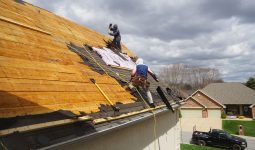Fire alarms are one of those things you barely notice—until you really, really need them.
They sit quietly on the ceiling, doing their job, but knowing how they work and how to look after them? That can actually save lives.
Smoke alarms that are properly installed and maintained play a vital role in reducing fire deaths and injuries.
Every home ought to have a trustworthy fire detection system, but let’s be honest—most people don’t know much about the different alarm types or how often they should check them.
This isn’t just about ticking a box for safety codes; it’s about protecting your family and your stuff.
Here are some facts that might clear things up and help you keep your home safer.
1. Smoke alarms detect smoke early, giving you as little as 2 minutes to escape during a fire.
Smoke alarms are crucial safety devices that notice smoke way before you ever would. According to fire safety experts, these gadgets give you an early warning—and sometimes, that’s the only thing standing between you and disaster.
If a fire breaks out at home, you might have as little as two minutes to escape safely. That’s barely enough time to grab your phone, let alone your favorite shoes. Early detection is everything.
Modern smoke alarms can pick up even tiny amounts of smoke in the air. They’re loud on purpose—meant to wake you up and get everyone moving, fast.
The American Red Cross points out that early warning from working smoke alarms gives you those precious extra moments to put your escape plan into action.
Fire doubles in size every 30 seconds. That’s wild. Having smoke alarms that work can buy you just enough time to get out—sometimes, that’s all you need.
2. There are two main types of smoke alarms: ionization and photoelectric, each detecting different fire types
Not all smoke alarms are built the same. There are two main types: ionization and photoelectric. Each has its own strengths, depending on the kind of fire you’re up against.
Ionization smoke alarms are quicker at spotting fast-flaming fires—the kind that flare up suddenly with big flames but not much smoke.
Photoelectric smoke alarms, on the other hand, are better at detecting those smoldering fires that fill the place with smoke before you even see flames.
It’s worth knowing which alarm does what. Ionization models use a tiny bit of radioactive material to sense smoke particles, while photoelectric ones use a beam of light that gets scattered by smoke.
Honestly, most fire safety experts say you should just get both types. Or, if you want to keep it simple, look for dual-sensor alarms—those combine both technologies in one device.
3. Interconnected smoke alarms across all home floors increase safety by sounding alarms simultaneously
If you’ve got more than one floor—or even just a big house—interconnected smoke alarms are a game changer. When one goes off, they all do, so nobody’s left in the dark (or the smoke).
This setup means you’ll hear the alarm no matter where the fire starts. Interconnected smoke alarms may reduce your chances of dying in a home fire by 50 percent when you keep them in good shape.
Think about it: in a regular setup, a fire in the basement might not wake up someone sleeping upstairs. Interconnected alarms fix that problem by making sure every alarm sounds together.
These days, interconnected alarms can be hardwired or use wireless connections, so you don’t have to rip up your walls to upgrade. Works for new builds or older homes.
It’s smart to test all interconnected alarms monthly using the test button. When you press one, they should all sound off—if not, something’s not right.
4. Regular monthly testing of smoke alarms is essential to ensure they function properly in an emergency
Smoke alarms are your first line of defense against fires, but if they’re not working? They’re just plastic on the ceiling. Testing alarms monthly is what the pros recommend.
It’s easy: just hit the test button and listen for that sharp beep. If it’s weak or totally silent, swap out the batteries or replace the whole thing if it’s old.
Let’s be real, most folks forget to check their alarms. Setting a phone reminder or tying it to Daylight Savings time helps. Some people even make it a family thing, so everyone (kids included) knows what the alarm sounds like.
Monthly testing can catch problems like dead batteries, broken sensors, or alarms clogged with dust—stuff that could keep them from working when you really need them.
5. Smoke alarms reduce the risk of dying in a home fire by half when installed and maintained correctly.
Smoke alarms are crucial life-saving devices for every home. According to data, smoke alarms can cut the chance of dying in a home fire in half. Some studies even suggest they can reduce the risk by up to 60 percent.
The key to this protection is proper installation and maintenance. Smoke alarms should be installed on every level of the home, inside each bedroom, and outside sleeping areas. That way, if something goes wrong in the middle of the night, everyone actually has a shot at hearing the alarm.
Regular testing is essential for keeping smoke alarms working when you need them. Homeowners should press the test button once a month—just to be sure—and swap out batteries at least once a year (or when that annoying low-battery chirp starts up, whichever comes first).
They provide early warning of fire, giving families precious time to escape before toxic smoke and heat make exit impossible.
Experts recommend replacing smoke alarms entirely every 10 years, as their sensors can become less effective over time. The manufacture date is typically printed on the back of the alarm. Honestly, it’s easy to forget, but it’s worth checking.








